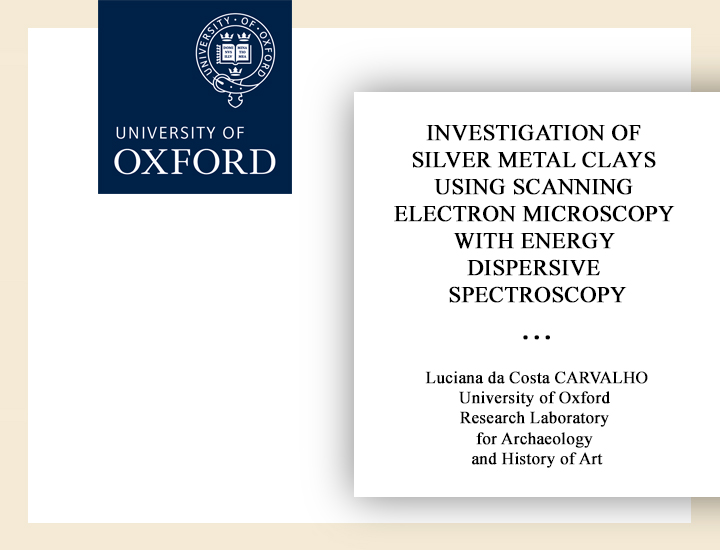Sima’s work was featured by Oxford University’s International Journal of Conservation Science
Sima’s work medium was used in investigation of silver metal clays using scanning electron microscopy with energy dispersive spectroscopy. By Luciana da Costa CARVALHO, University of Oxford, Research Laboratory for Archaeology and History of Art, Dyson Perrins Building, South Parks Road, Oxford OX1 3QY, United Kingdom.
“In order to display a metallic shine, the surface of fired metal clay must be smoothed out with abrasives and polishing material. Figure 1 illustrates the manufacture of one of the pieces from Sima Vaziry’s 2012 Hajj Collection, commissioned by the British Museum (BM).
Users of metal clays have developed their own techniques and tools for manipulating the material and reducing shrinkage. For instance Mrs. Vaziry uses graphic design techniques to ensure reproducibility of features – a particular concern given that her BM pieces are produced in large numbers [5]. Although these objects are produced using metal clays the description of the pieces featured on the BM’s website does not mention it specifically [6]. In Mrs. Vaziry experience the main reason for the omission is that objects made of metal clay are composed of pure metal once fired and are thus hallmarked accordingly [5, 7]. Another reason for the omission may be that precious metal clay is commonly associated with handcrafts, not designer jewellery [5]. But do objects produced from metal clay share the same characteristics as those produced by conventional methods? Should they be subjected to the same conservation interventions?”
April-June 2018













